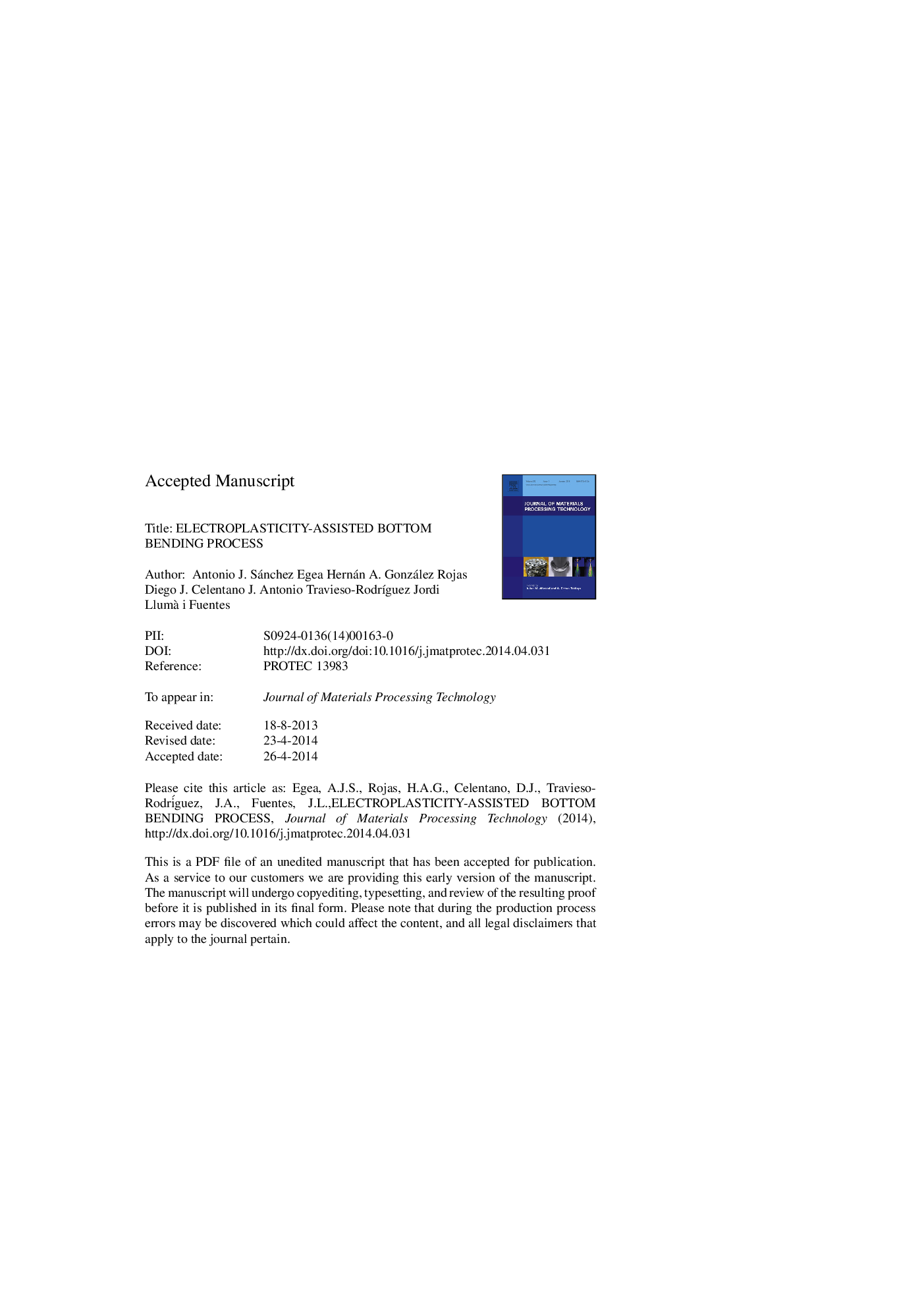| Article ID | Journal | Published Year | Pages | File Type |
|---|---|---|---|---|
| 10417358 | Journal of Materials Processing Technology | 2014 | 23 Pages |
Abstract
The present study reports the influence of the athermal effects of electroplasticity on the bottom bending process when the Joule effect is minimized to negligible values. To do so a short-time current pulse generator, capable of inducing 300 A current pulses and a pulse duration of 50 μs, was designed and manufactured. The materials studied were sheets of 1050-H18 aluminium alloy and X5CrNi18-10 stainless steel. A finite element analysis was done in order to characterize the different phases of the mechanical behaviour of a test specimen during the bottom bending process. The influence of current pulses on different phases was studied, specifically on the elastic restoring force and the maximum effective plastic strain phases. Current densities of 10-53 A/mm2 and frequencies of 100 and 200 Hz were used in the electrically-assisted bending process. Compared to the conventional process, the results of the electrically-assisted bending process show that the force drops up to 18% in aluminium and 6% in stainless steel. The elastic restoring force is also reduced up to 21% in aluminium and 12% in stainless steel. Therefore it can be concluded that athermal electroplasticity effects have an influence on the bottom bending process.
Related Topics
Physical Sciences and Engineering
Engineering
Industrial and Manufacturing Engineering
Authors
Antonio J. Sánchez Egea, Hernán A. González Rojas, Diego J. Celentano, J. Antonio Travieso-RodrÃguez, Jordi Llumà i Fuentes,
